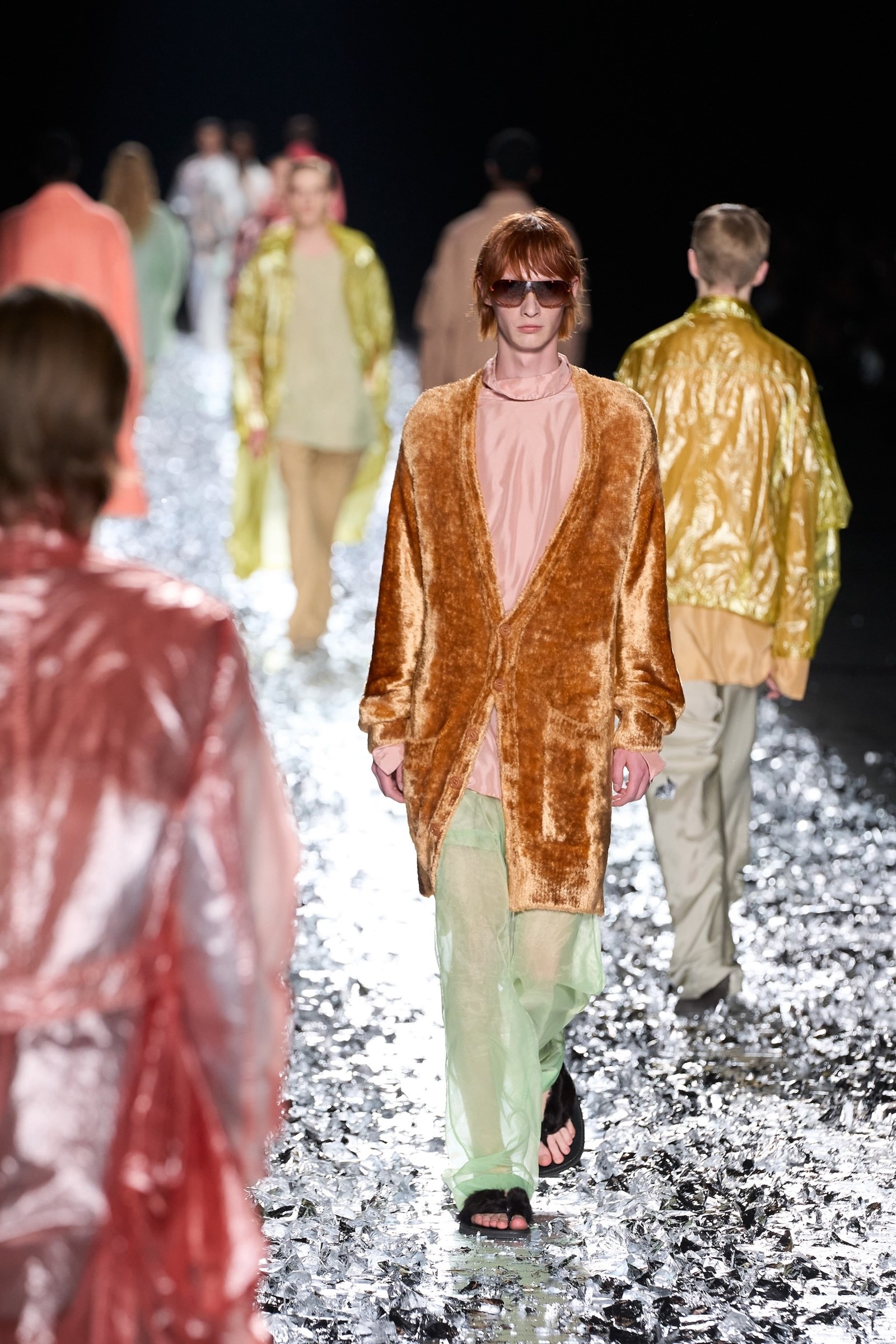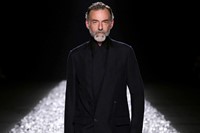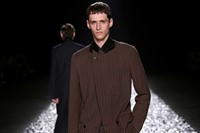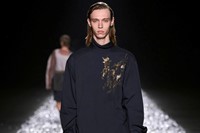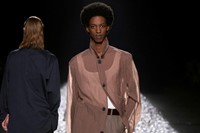After 38 years of work and 150 collections, this season the Belgian designer Dries Van Noten decided to quietly bow out from the fashion scene with his Spring/Summer 2025 menswear collection. Well, not so quietly – as attendance of this landmark show swelled, the designer decided to host a reception beforehand to allow guests to mingle and recollect their favourite Van Noten moments past before welcoming the audience into a vast warehouse space, catwalk caked in silver leaf, and a hidden glitter ball ready to explode out at the show’s finale.
The collection was classic Van Noten in its graceful tailoring, rich colour and ingenious prints, perhaps his best-known signature. This time, the designer worked with a traditional Japanese marbling technique named Suminagashi, dating back a millennia and created through ink patterned atop water then transferred to fabric, here, especially organza in jewel-like tones. Created on one side of fabric, filled with unpredictable imperfections, every piece is unique. But the collection was also classic Van Noten in that, rather than looking back and pulling pieces from a career filled with highlights, it forged forwards to propose something new. It also showed his menswear pieces on female models – Karen Elson, Deborah Shaw, Hannelore Knuts – a throwback to when Van Noten presented his very first men’s collection as part of the British Designer Show in Olympia, London, in 1986, where it was picked up by retailers as womenswear, too.
The day after this milestone show – the first time Van Noten could speak of his career in design in the past, rather than the present, tense – he sat down with AnOther to discuss his decision and his designs.
Alexander Fury: I wanted to ask, first of all, when you began designing this collection, had you decided it was going to be your final collection?
Dries Van Noten: Yes. This was already decided quite a long time [ago]. It was not like an impulse. I wanted to stop with a men’s collection.
AF: Because you started with …
DVN: Because I started with the men’s, and I wanted really to bookend it. And ending also on a happy note – a celebration of everything that we did and also celebration of the future.
AF: I kind of like the vague perversity of it being the 129th show. Was it connected with that? Was it connected with where you were in your life?
DVN: It’s different things, in fact. When we signed with Puig [Van Noten sold a majority stake in his company to the family-owned Spanish fragrance and fashion group in 2018], it was already at that moment that we said, “OK, let’s make an agreement that we continue for a while. Let’s see how we feel.” But I said that I didn’t want to continue until my late seventies. I said, “There are also so many other things in life which I still want to do.” And those things, you’re not going to start when you’re 75.
Also Patrick [Vangheluwe, Van Noten’s partner who has also worked with the designer since 1987] who said, “OK, I think we did a good job. We did a lot of things. We are happy where we are and also we have trust in the future.” Maybe better to stop on a moment like this than being kindly asked to ...
[He smiles]
The way that I work in fashion is really in a very intense way. And I didn’t want to try to, at the age where I am, try to start to work and make collections in a different way.

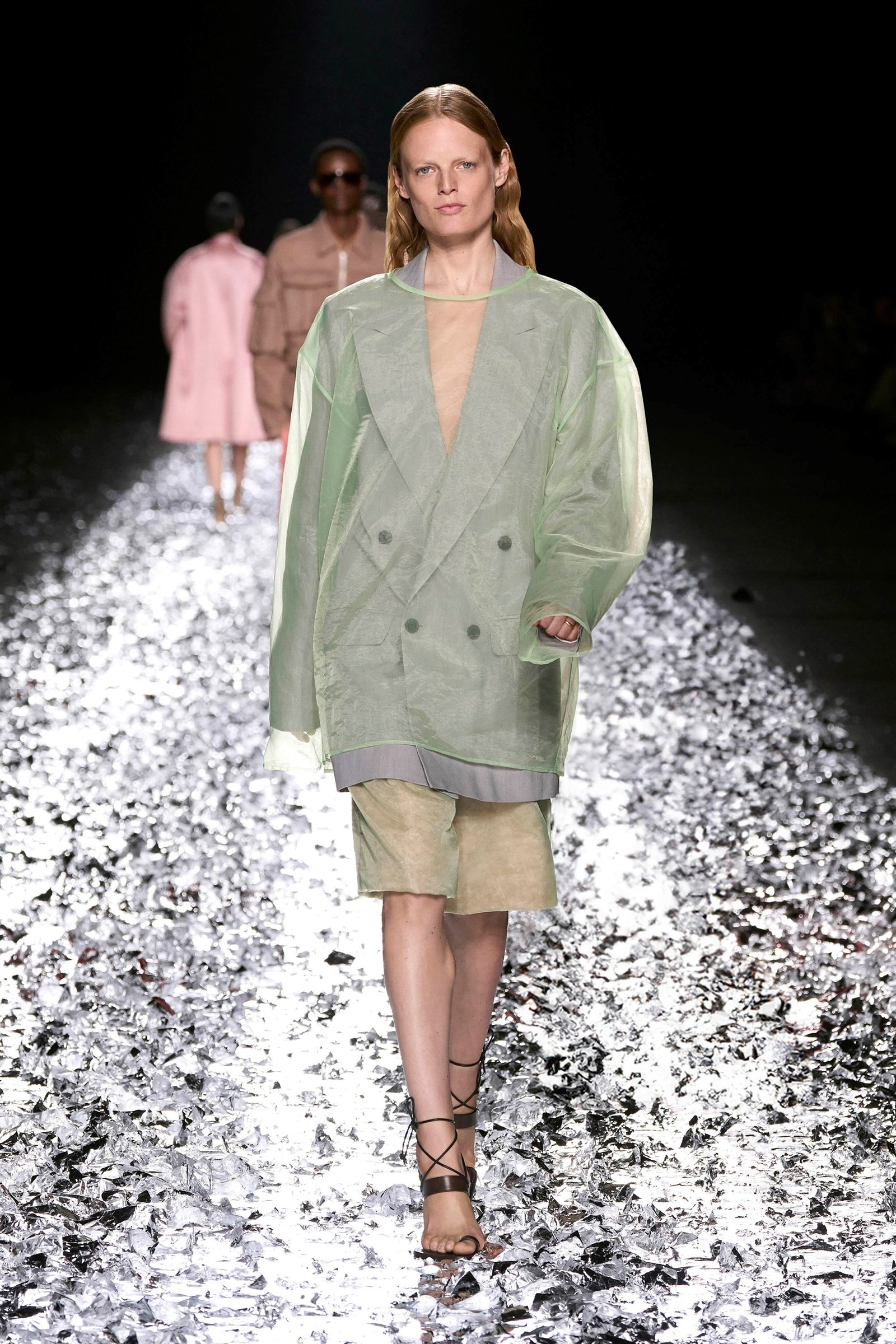
AF: You didn’t want to step back and have it be like, “Oh, someone else can do it, and then I can poke my head in … ”?
DVN: No. That’s not what I wanted to do. So we made an announcement and reactions were much more intense than I expected. The idea was originally to have a normal last fashion show, but then immediately the requests to attend the show and everything started to come in. I said, “I don’t think we are going to have enough. It’s a room for 400 people.”
AF: How many came?
DVN: 1,060, 1,070.
AF: So nearly three times …
DVN: The normal capacity. So then we had to look for another venue and then of course with the Olympics, big venues in Paris, forget it. But then there was still that factory outside where we did the 50th show with the long table. So we said, “Maybe let’s have a look there,” and it was still available.
AF: This was the 129th show, but it’s the 150th collection. How do you look back over a body of work like that? Do you look back?
DVN: Of course. I couldn’t erase everything that I did to make this collection, so it’s normal. And of course you look a little bit more backward also. But definitely I didn‘t want to do a ‘best of’. For me, it was really important that I was showing that I want to still to a few steps – and maybe quite a lot of steps – forward, to be experimental. Also, the fact that I could concentrate only on the men’s and didn’t have to divide my time between men’s and women’s gave us also the possibility to push it much further. Working on the Japanese print [Suminagashi] was also something that I could do now, because I had the time to guide it.

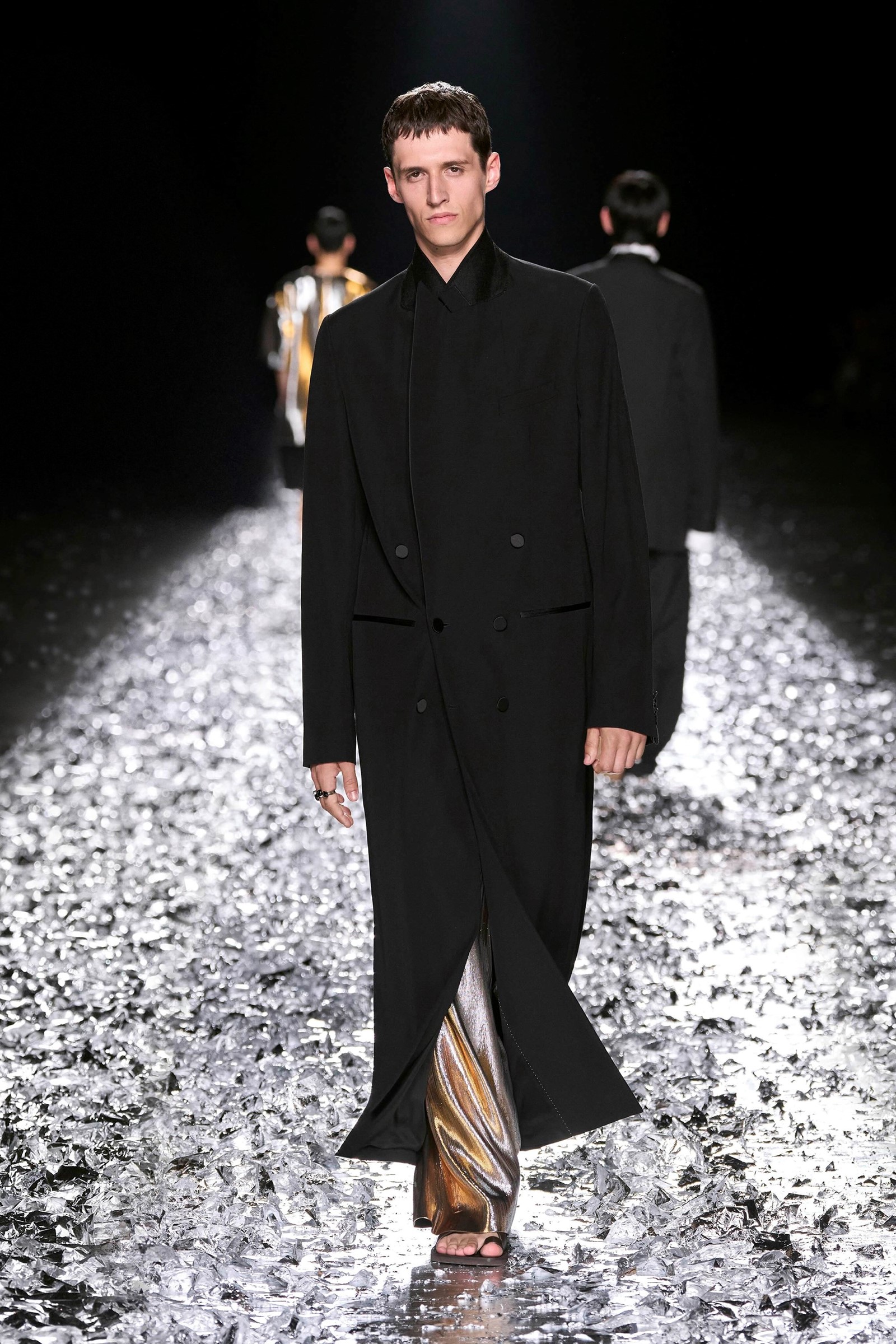
AF: It is perhaps inevitable at this point to look backwards – I wanted to ask if you can remember what your first collection was like? What the reaction was to that?
DVN: I always was quite intrigued by how far you can push menswear and tailoring and things like that, how you can cut a suit, how you can change proportion by just making lapels higher, lower. So it was something which was interesting to me, but it was just a practical decision [to begin with menswear].
The first customer that came in was Barney’s New York, who wanted to buy for the women’s department, not for the men’s department. So that’s how I started.
AF: Do you feel that your relationship to fashion has changed since then? Or do you feel that you still have the same kind of motivations behind making clothes as you did at the start of your career?
DVN: I think I continued always with the same principles. Of course, I learned. Fashion changed, the world changed, the needs of fashion have also changed. The way that you have to do fashion to stay successful and profitable is also like that. And to say profitable, it’s not just only for the money, but your business has to continue. And without making money, you can’t, so the whole way that you look towards fashion has changed. But still the core, the soul of who I am, as a designer, stays the same for me.
AF: This is a very direct question, but I did want to ask, why did you decide that now was the time for you to step away?
DVN: I think the timing was right. So originally the planning, there was a possibility to stop earlier, but then of course Covid changed quite a lot in the plans.
So really when we finalised the date – which was now a year ago – for me it made sense. Also, I think the company’s ready, the team is ready too. That we could take a step and that I don’t have to worry constantly like, “Oh my goodness, what is going to happen now?”
AF: I guess it’s that difficult because it’s your baby.
DVN: More than my baby. It’s more than my baby, it’s a grown up child, which went through puberty and everything. No, but it’s in safe hands, and I’m happy. And that was also the main reason why we said, “OK, we can do it now.” And also, Patrick and I, we are still at the age that we still can go for new challenges. New things to discover.
